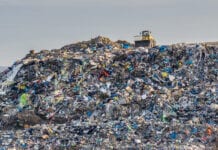THE risk from toxic landfill sites is difficult to judge, and the case of 7-year old Zane Gbangbola may illustrate why. Zane died in February 2014, a day after his home in Chertsey was hit by severe floods. His parents Nicole and Kye were hospitalised in a critical condition. Officials are investigating whether Zane’s death was caused by carbon monoxide poisoning. But family, friends and the fire services crew have highlighted evidence suggesting the real culprit was hydrogen cyanide, a toxic gas that can lurk in unregulated landfill, released from the ground by mixing with floodwater.
A succession of lines of enquiry pointing to this verdict appear to have been left unfollowed in the aftermath of Zane’s death. The family’s own investigations into the area near their home have since revealed that a field 6 metres away – seemingly idyllic – is actually contaminated land. Zane’s parents bought the house in 2004, when an environmental report showed no land contamination.
The case has prompted lobbying group 38 Degrees to assemble a petition calling upon the EA, Spelthorne Local Authority and David Cameron to hold a public debate on the matter.
An article in a January edition of the Ecologist said: “What Zane’s tragic story tells us is that regulators are less concerned about public safety, than about avoiding public awareness of the risks posed by contaminated, unregulated landfill sites throughout the UK. How many are there? Could you be living by one?”







